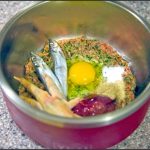BML Diet Sugar Glider: Unveiling The Ultimate All-Natural Nutrition Plan For Your Beloved Flying Companions!
BML Diet for Sugar Gliders: A Healthy Choice for Their Well-Being
Introduction
Hello Healthy People,
1 Picture Gallery: BML Diet Sugar Glider: Unveiling The Ultimate All-Natural Nutrition Plan For Your Beloved Flying Companions!

Sugar gliders are adorable marsupials native to Australia, Indonesia, and New Guinea. These unique creatures have become increasingly popular as pets due to their small size and charming personalities. As responsible owners, it is crucial to provide them with a balanced and nutritious diet to ensure their overall well-being. One such diet that has gained popularity among sugar glider enthusiasts is the BML diet. In this article, we will explore the ins and outs of the BML diet, its benefits, and how to implement it properly.
What is the BML Diet?

Image Source: wixstatic.com
The BML (Bourbon’s Modified Leadbeater’s) diet is a nutritionally complete and balanced diet specifically formulated for sugar gliders. It was developed by Peggy Brewer and Chris Johnson, who aimed to create a diet that closely resembles the sugar gliders’ natural food sources in the wild. The BML diet consists of a mixture of fresh fruits, vegetables, proteins, and supplements, providing all the necessary nutrients for the sugar gliders’ optimal health.
Who Should Consider the BML Diet?
The BML diet is suitable for sugar glider owners who are committed to providing their pets with a well-rounded and nutritious diet. While there are other diet options available, the BML diet offers several advantages that make it an attractive choice for sugar gliders’ dietary needs. It is especially recommended for owners who want to ensure their pets receive a balanced diet without the hassle of preparing separate meals.
When to Start the BML Diet?
The BML diet can be introduced to sugar gliders at any age, from joeys (baby sugar gliders) to adults. It is crucial to gradually transition them to the new diet to avoid any digestive issues. Ideally, it is recommended to start the BML diet when the sugar gliders are young or during their bonding process with their owners.
Where to Find BML Diet Ingredients?
The ingredients for the BML diet can be sourced from local grocery stores, farmers’ markets, or specialized pet stores. It is essential to select fresh and organic fruits and vegetables whenever possible to provide the highest quality nutrition for your sugar gliders. Additionally, some online retailers offer pre-packaged BML diet kits that provide all the necessary ingredients in convenient portions.
Why Choose the BML Diet for Your Sugar Gliders?
The BML diet offers several benefits for sugar gliders, including:
Complete Nutrition: The BML diet is carefully formulated to meet all the nutritional needs of sugar gliders, ensuring they receive a well-balanced diet.
Convenience: The BML diet allows owners to prepare meals in advance and store them for several days, reducing the time and effort required for daily feeding.
Healthier Teeth and Gums: The BML diet’s natural ingredients help promote dental health, as sugar gliders need to gnaw on fibrous food to maintain strong teeth and gums.
Prevents Nutritional Deficiencies: The BML diet includes supplements that provide essential vitamins and minerals, helping prevent deficiencies that may arise from other diets.
Weight Control: The BML diet helps maintain a healthy weight for sugar gliders by providing the right balance of nutrients and portion sizes.
Disadvantages of the BML Diet
While the BML diet offers numerous advantages, it is important to consider its drawbacks as well. These include:
Time-Consuming Preparation: The BML diet requires careful preparation and blending of various ingredients, which can be time-consuming for some owners.
Availability of Ingredients: Some of the ingredients for the BML diet may not be readily available in certain areas, requiring owners to make alternative choices or order online.
Transition Period: Sugar gliders may take time to adjust to the BML diet, and some individuals may initially resist the change in their food preferences.
Frequently Asked Questions (FAQs)
1. Is the BML diet suitable for all sugar gliders?
Yes, the BML diet is suitable for all sugar gliders, regardless of age or health condition. However, it is always best to consult with a veterinarian before making any dietary changes.
2. Can I modify the BML diet based on my sugar glider’s preferences?
While the BML diet offers a balanced nutrition plan, you can make slight modifications based on your sugar glider’s preferences. However, it is important to ensure that the essential nutritional requirements are still met.
3. Can I supplement the BML diet with treats?
Yes, you can supplement the BML diet with occasional treats, such as mealworms or small pieces of fresh fruit. However, treats should only make up a small portion of their overall diet.
4. How long does it take for sugar gliders to adjust to the BML diet?
The adjustment period varies for each sugar glider. Some may adapt quickly, while others may take several weeks to fully transition to the new diet. Patience and consistency are key during this process.
5. Can I switch back to the previous diet if my sugar glider doesn’t like the BML diet?
If your sugar glider is resistant to the BML diet, consult with a veterinarian for guidance. They may suggest alternative diets or gradual modifications to increase acceptance.
Conclusion
Choosing the right diet for your sugar gliders is essential for their overall health and well-being. The BML diet offers a convenient and nutritionally complete solution to meet their dietary needs. By providing a balanced mix of fresh fruits, vegetables, proteins, and supplements, you can ensure your sugar gliders live a happy and healthy life. Remember to consult with a veterinarian for personalized advice and guidance when implementing the BML diet or making any dietary changes.
Final Remarks
Disclaimer: The information provided in this article is for educational and informational purposes only. It is not intended to be a substitute for professional advice, diagnosis, or treatment. Always seek the advice of a qualified veterinarian or other qualified pet health provider with any questions you may have regarding your pet’s health or dietary needs.
This post topic: Diet



